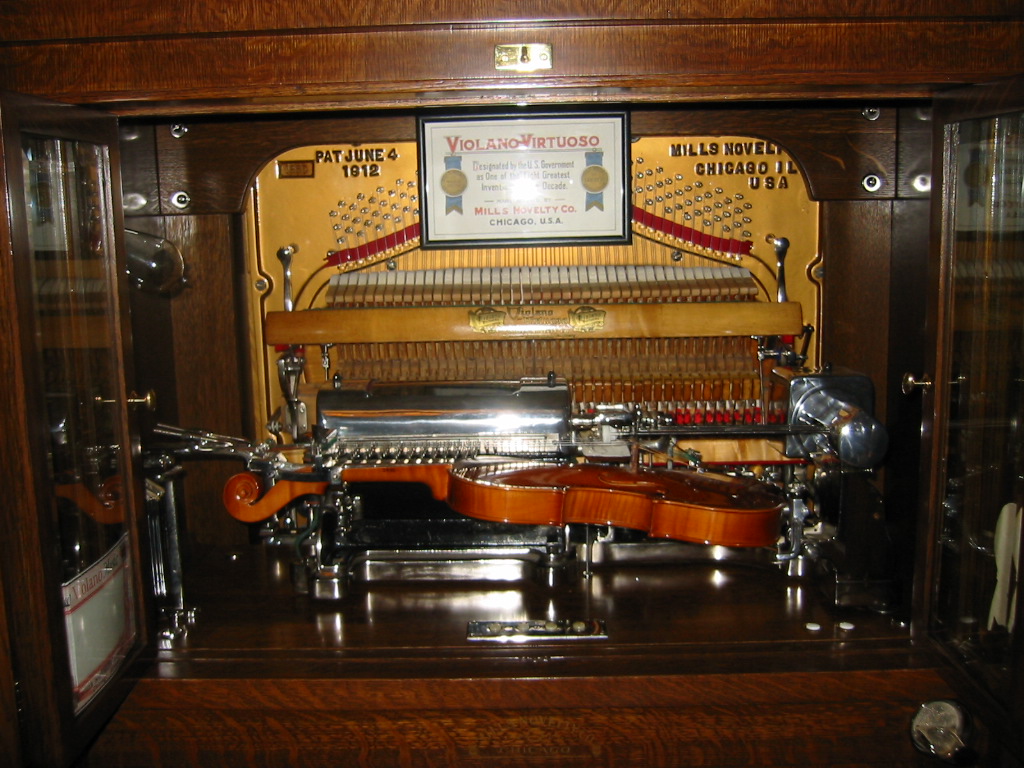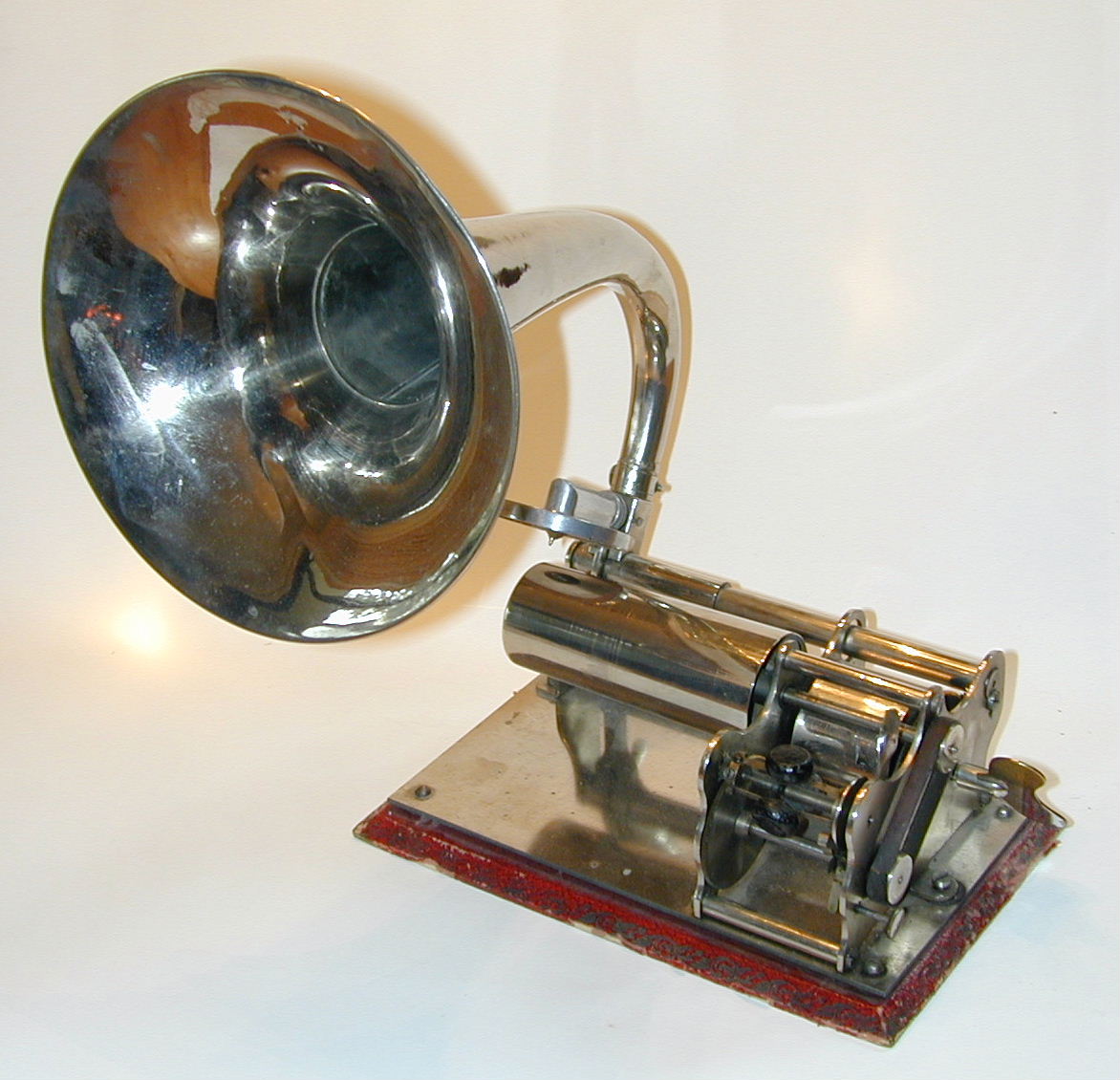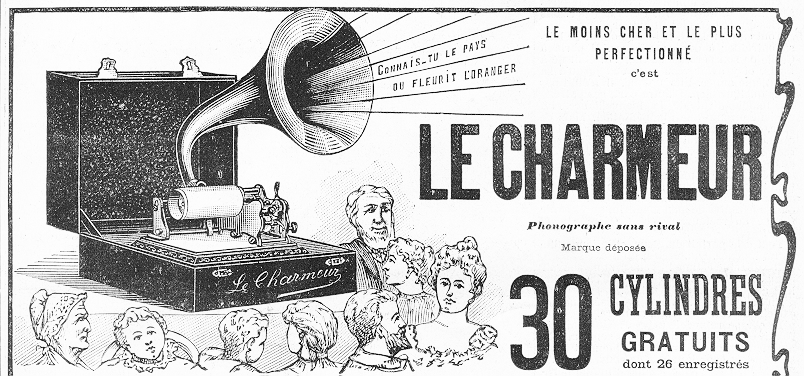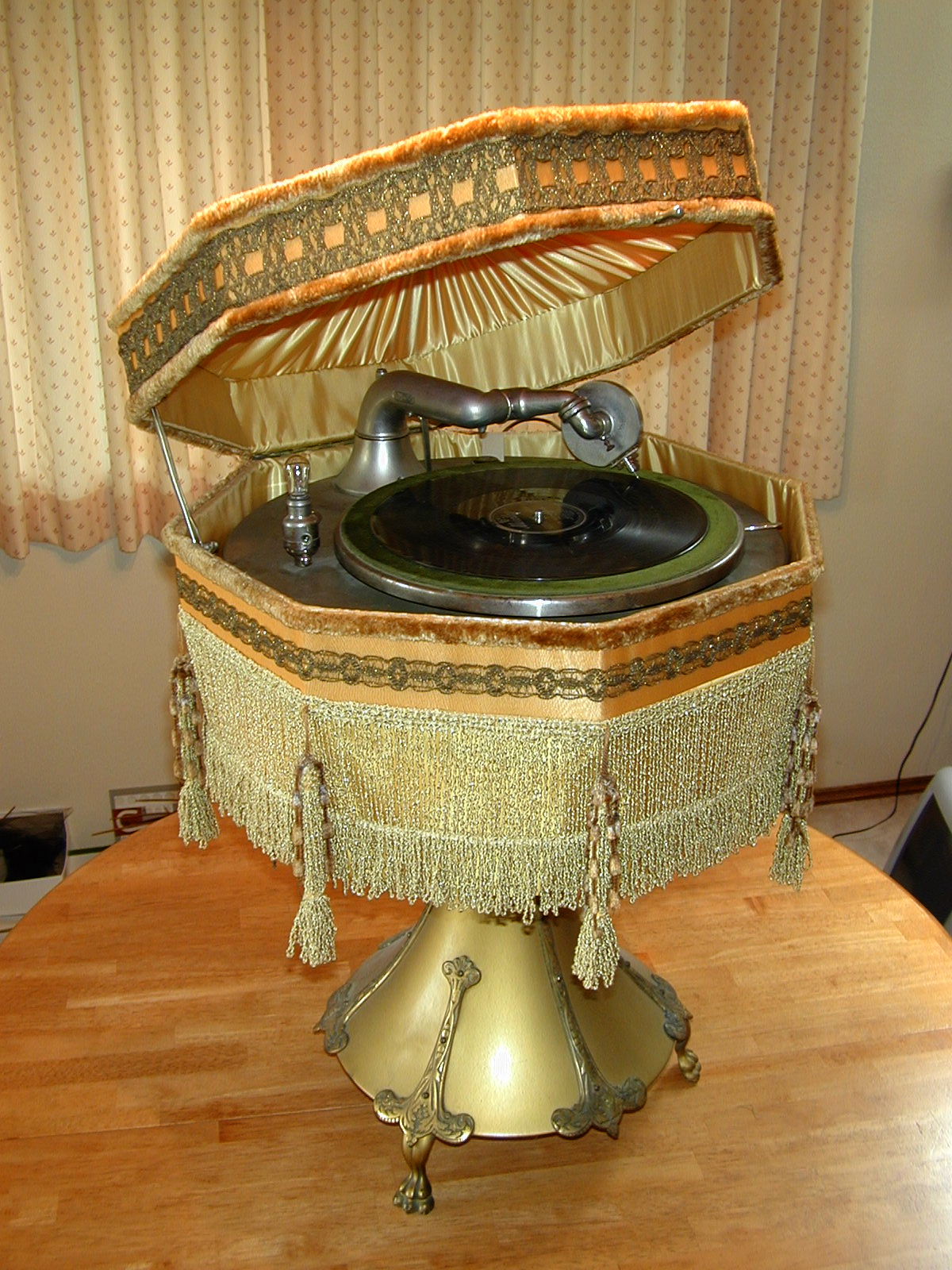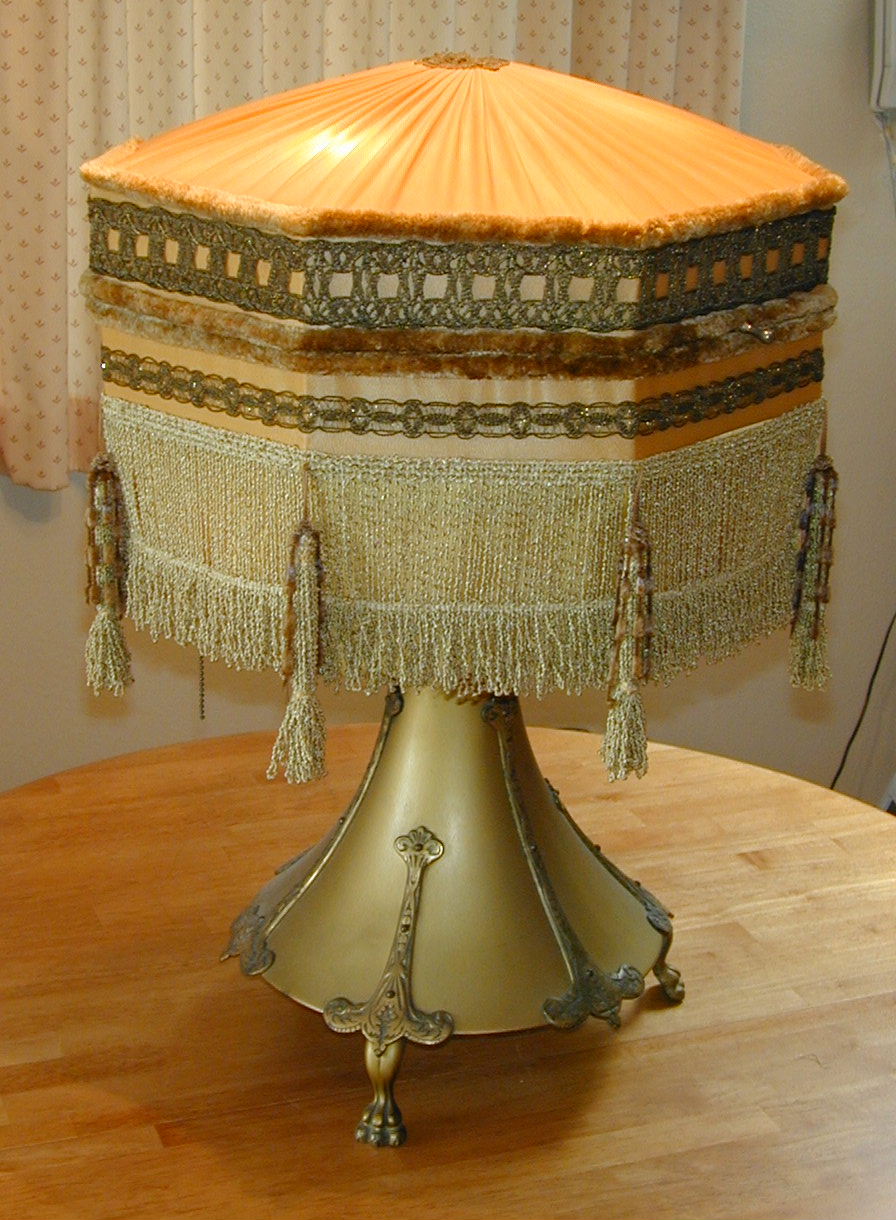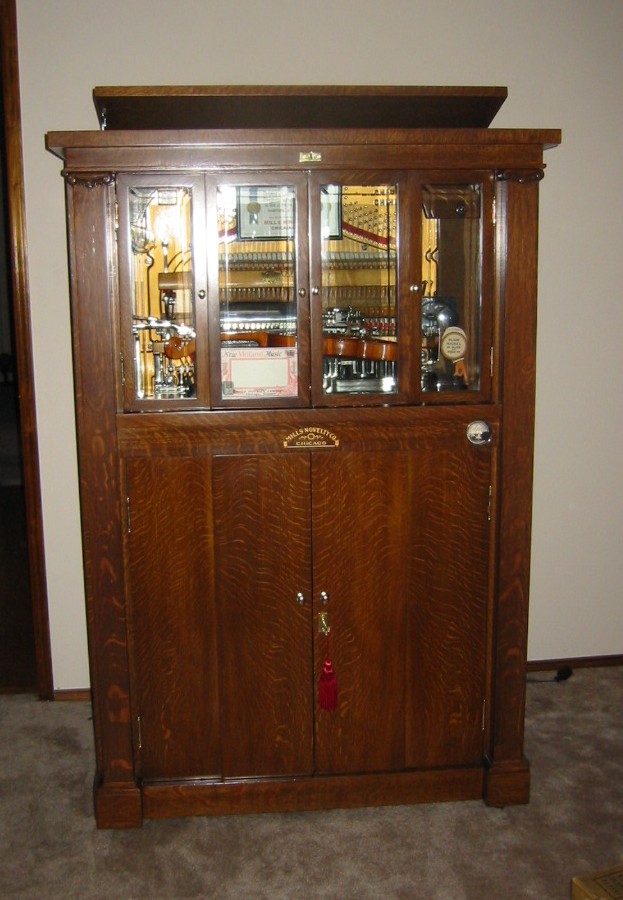
This is a Mills Single Violano-Virtuoso. The Mills Novelty Company produced from 4,000 to 5,000 Violanos between 1914 and 1930.
Unlike most automatic instruments, Violanos operate on electricity rather than air. Holes in a scrolling paper roll cause electrical contacts, which energize solenoids to trigger piano hammers, press metal fingers on the violin neck, and lower bow wheels onto the violin strings. The violin can play 64 notes, up to four at a time; the piano has 44 notes.

